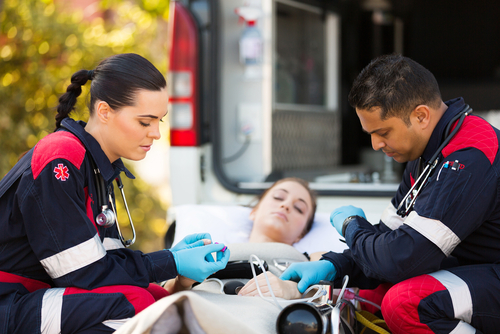 Recently, researchers have observed a significant increase in the incidence of several chronic diseases, such as COPD, diabetes mellitus and heart failure, among others. Because patients affected by these diseases require palliative health services, including frequent hospitalization, demands on healthcare system needs and expenses are escalating rapidly. Therefore, in order to respond to the new and continuous requirements from these patients, a new study entitled “Expanding Paramedicine in the Community (EPIC): study protocol for a randomized controlled trial”, published in the journal Trials, suggests that the current healthcare system must evolve and adapt to the needs of patients with such chronic diseases, in order to improve patients’ care and use in a more sustainable manner the health care system resources.
Recently, researchers have observed a significant increase in the incidence of several chronic diseases, such as COPD, diabetes mellitus and heart failure, among others. Because patients affected by these diseases require palliative health services, including frequent hospitalization, demands on healthcare system needs and expenses are escalating rapidly. Therefore, in order to respond to the new and continuous requirements from these patients, a new study entitled “Expanding Paramedicine in the Community (EPIC): study protocol for a randomized controlled trial”, published in the journal Trials, suggests that the current healthcare system must evolve and adapt to the needs of patients with such chronic diseases, in order to improve patients’ care and use in a more sustainable manner the health care system resources.
In this study, the authors developed a method to study the influence in expanding the paramedic’s scope of practice, by involving a community-based care approach. They suggested that this method may significantly decrease the frequency of hospitalization, as well as hospital health resources associated with it. The method of study is based on a randomized but controlled group of paramedics who work in York, Canada, and who the researchers believe are representative of general Paramedicine services.
[adrotate group=”3″]
The first group in the study included community-based paramedics, which were compared to a second group of standard care paramedics. The goal was to observe if the first group, which conducted regular home visits to patients with chronic obstructive pulmonary disease and other chronic diseases like diabetes mellitus, and heart failure, could significantly decrease hospitalization admissions, as well as the use of the emergency department, as a reduction would significantly impact patient care and hospital resources. For the study, the authors used statistical analysis to measure the rate of hospitalization (frequency and length of stay) from the patients after one year as well outcomes, including patient overall health status and the cost-effectiveness of intervention, if needed.
While data from the study is still be compiled, with the development of this clinical trial/approach, the authors intend to implement a program that, if successful in terms of its outcomes, will broaden the standard care from the paramedic’s and consequently, expand the community-based paramedic programs to a national and international level.

